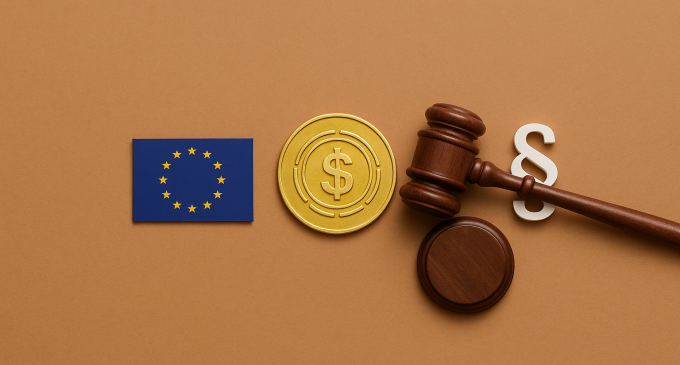
Introduction
The European Union has taken a landmark step in financial legislation with the finalization of stablecoin rules under the Markets in Crypto-Assets (MiCA) framework. As the first comprehensive regulatory regime for digital assets globally, MiCA signals the EU’s intention to not just regulate the crypto sector but to become a global leader in defining its future. The legislation is expected to reshape the stablecoin industry, introducing stringent guidelines for issuers and enhancing investor protection while promoting innovation and transparency.
This article offers a deep dive into the finalized rules, their implications on the crypto landscape, and what it means for stablecoin issuers, exchanges, and the broader financial system. We explore the structure of MiCA, the concerns addressed, the opportunities presented, and how this legislative initiative may set the standard for jurisdictions around the world.
What Is MiCA? An Overview Of The Regulatory Framework
MiCA, or the Markets in Crypto-Assets regulation, is a legislative package introduced by the European Commission aimed at creating a consistent regulatory environment for digital assets across the European Union. Officially adopted in 2023 and finalized with specific provisions in 2025, MiCA focuses on crypto-assets not currently covered under existing financial laws. This includes stablecoins, utility tokens, and asset-referenced tokens.
MiCA introduces clear licensing regimes, capital reserve requirements, and transparency mandates for service providers. Its framework segments crypto-asset issuers and service providers into identifiable categories, assigning regulatory responsibilities and compliance procedures that mimic those imposed on traditional financial institutions.
Why Stablecoins Were A Priority?
The EU’s urgency in regulating stablecoins stems from concerns about their rapid adoption, potential impact on monetary policy, and insufficient oversight. Stablecoins, by design, are digital assets pegged to the value of fiat currencies, offering the benefits of crypto (instant settlement, low fees) without the volatility. However, their rising usage also presents risks to financial stability.
Key concerns driving the stablecoin regulation include:
Risk of De-pegging: Inadequately backed or managed stablecoins can lose their peg, causing significant losses.
Lack of Transparency: Issuers often don’t disclose collateral details or auditing practices.
Threat to Sovereignty: Widespread adoption of private digital currencies may undermine central banks’ control over the money supply.
Cross-Border Risks: Unregulated assets can move freely, complicating oversight and enforcement.
By making stablecoin regulation a priority, the EU aims to mitigate these risks while promoting trustworthy financial innovation.
Key Provisions Of Stablecoin Regulation Under MiCA
1. Classification of Tokens
MiCA distinguishes between three types of tokens:
Electronic Money Tokens (EMTs): Pegged to a single fiat currency and resemble traditional e-money.
Asset-Referenced Tokens (ARTs): Linked to a combination of assets (currencies, commodities, etc.).
Utility Tokens: Used for accessing services rather than as a means of exchange or value.
Stablecoins fall under EMTs or ARTs, depending on their structure, and must comply with strict rules based on classification.
2. Licensing and Authorization
Stablecoin issuers must receive authorization from a national competent authority (NCA) in the EU. EMTs can only be issued by authorized credit institutions or e-money institutions, while ARTs must meet additional obligations including whitepapers and disclosures.
3. Reserve and Backing Requirements
MiCA mandates that all stablecoins be fully backed by a reserve of assets that correspond to the value of the token in circulation. These reserves must be:
- Held in segregated accounts.
- High-quality, liquid assets (like government bonds or cash equivalents).
- Subject to third-party auditing and monthly disclosures.
- This provision directly targets the lack of transparency that plagued projects like TerraUSD.
4. Daily Redemption Rights
Consumers holding stablecoins will have the right to redeem them at par value at any time, reinforcing trust and protecting against value loss due to market or issuer failures.
5. Issuance Limits and Supervision
Large-scale stablecoins—those used by more than 1 million users or with transactions exceeding €200 million daily—face additional oversight by the European Banking Authority (EBA). Issuers exceeding these thresholds must provide risk assessments and limit their growth unless permitted.
6. Transparency and Disclosures
Stablecoin issuers are now required to publish detailed whitepapers outlining:
- Token mechanics
- Collateral strategy
- Risk management policies
- Governance structure
- Consumer rights
These disclosures must be accessible, regularly updated, and reviewed by regulatory bodies.
Impact On The Stablecoin Industry
The immediate effect of MiCA is the professionalization of stablecoin projects. Issuers now need legal teams, compliance officers, and robust accounting systems. While this may stifle smaller projects, it strengthens market integrity and opens the doors for institutional involvement.
Positive Outcomes
Market Legitimacy: Investors and users gain confidence in stablecoins backed by audited reserves.
Institutional Adoption: Banks and fintechs can now legally enter the space under regulated environments.
Consumer Protection: Retail users benefit from enforceable rights and transparency.
Challenges And Concerns
Compliance Burden: Smaller startups may struggle with legal and administrative costs.
Exit of Unregulated Players: Many current stablecoins may not survive the transition if non-compliant.
Fragmentation Risk: Global interoperability might suffer if non-EU jurisdictions don’t align.
Europe’s Global Crypto Ambition
By finalizing MiCA, the EU positions itself as a regulatory pioneer. While the U.S. still debates crypto policy across fragmented agencies, Europe has enacted a single, enforceable framework. This could have ripple effects across global markets.
The EU’s ambition is twofold:
Internal Cohesion: Enable cross-border crypto operations without national inconsistencies.
Global Leadership: Set the benchmark for responsible crypto innovation globally.
Other jurisdictions—including the UK, Singapore, and Japan—are observing MiCA’s rollout to guide their own frameworks.
MiCA Compliance Timeline
Although MiCA was passed in 2023, the provisions for stablecoins were finalized in June 2025, with enforcement starting July 2025. Key milestones include:
July 2025: ART and EMT issuers must register and comply.
August–September 2025: Audits and reserve disclosures begin.
October 2025: Large stablecoin issuers evaluated by EBA.
The European Securities and Markets Authority (ESMA) and the EBA will coordinate supervision with national regulators.
Industry Reaction: Support And Scrutiny
Support from Institutional Stakeholders
Major fintech firms like Circle and Fireblocks have welcomed MiCA, viewing it as a necessary evolution. Circle, the issuer of the USDC stablecoin, has announced its intention to apply for MiCA licensing and build compliance directly into its operations in Europe.
Criticism from Decentralization Advocates
Not everyone is on board. Crypto advocacy groups and DeFi developers have criticized MiCA’s scope, arguing that decentralized protocols cannot comply with rules designed for centralized entities.
Some claim MiCA may unintentionally push innovation outside of the EU, citing the risk of “regulatory arbitrage”—where firms relocate to jurisdictions with more lenient rules.
Conclusion
The finalization of stablecoin rules under the MiCA framework marks a transformative moment in global crypto policy. The EU has stepped forward as a bold actor, choosing clarity over ambiguity, and investor safety over unchecked innovation.
While the road ahead may present challenges for compliance and enforcement, the MiCA framework ultimately lays the foundation for a regulated, trusted, and innovation-friendly digital asset market. For stablecoins, in particular, MiCA offers a future where these digital assets can thrive under transparent and secure guardrails—paving the way for mainstream financial integration.
As the rest of the world looks to catch up, the EU is not only regulating crypto—it’s rewriting the rulebook for digital finance.







There are no comments at the moment, do you want to add one?
Write a comment